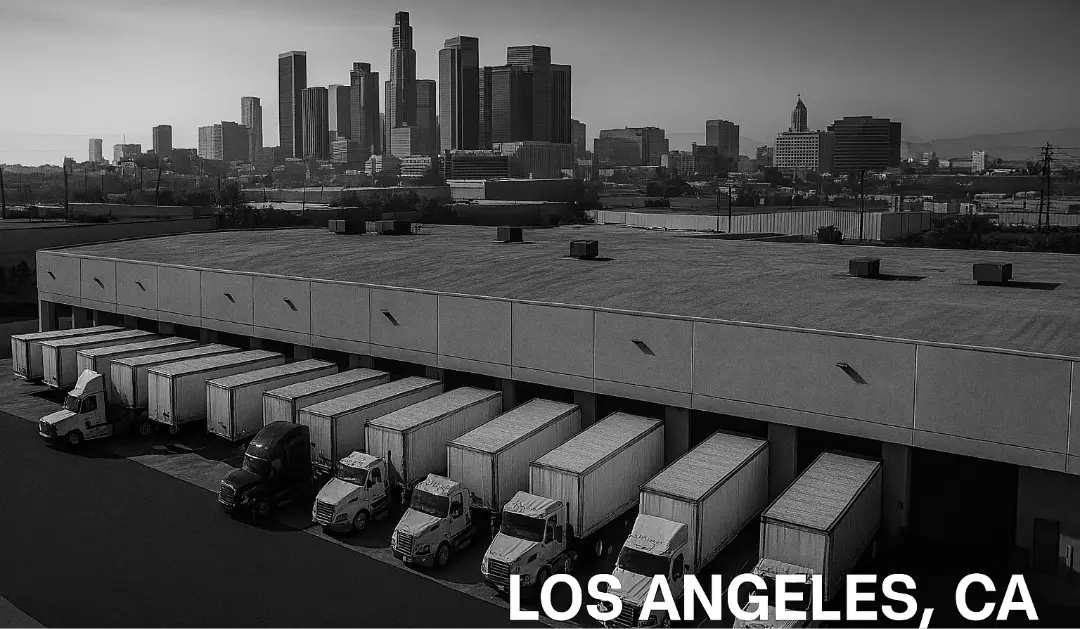Introduction
As a merchant, your success depends on many factors. One is efficiently managing your supply chain. Another is ensuring your goods get where they need to be safe. However, neither of those factors matters if you don’t have an organized storage system. In fact, your operations overall will likely be unsuccessful if you don’t have a good stacking and storage method in place.
Luckily, this blog is here to help you figure out the best one for your business.
The two primary forms of stacking and storing are “palletized” and “floor loaded” boxes. Each method has many advantages. However, choosing the right one is very important for your operational success. You must fully understand each method to decide which suits your business best. That’s why we will explore the definitions, pros, cons, and best practices of both palletized and floor loaded boxes. After reading this guide, you can make informed decisions that align with your business needs.
So, let’s get started!
Palletized Boxes
You probably could guess what this method is from its name. Palletized boxes and packages are securely arranged and stacked on pallets. Strapping, stretch wrap, or other stabilizing materials are necessary to do this. Overall, the pallet serves as a stable base for the boxes, which makes handling and transport more convenient.
So, what are the pros and cons of this method?
Pros:
- Efficiency: Palletized boxes streamline the loading and unloading processes. Therefore, this saves time and effort for your warehouse workers.
- Protection: Pallets act as a barrier between the boxes and the floor, which reduces the risk of damage from moisture, dirt, or spills.
- Stacking: You can stack boxes safely with this method. Plus, it contributes to good use of vertical space in your warehouse.
- Forklift Friendly: Pallets work perfectly with forklifts and other material handling equipment, simplifying movement.
- Tracking: Palletized loads are more accessible to track and count, making inventory management more effortless.
Cons:
- Cost: The need for pallets adds to the original investment in them. This is especially true if pallets are not readily available.
- Storage Space: Storing empty pallets can occupy much floor space when unused.
- Weight Restrictions: Pallets have weight limits. Therefore, exceeding them can compromise stability and safety.
Now that we’ve gone over the pros and cons of a palletized approach let’s see what you can do to help make this method more accessible for you to implement.
Best Practices
Some of the best ways to make the most of the palletized method and avoid problems are:
- Proper strapping and stretch wrap: Help secure boxes firmly to the pallet.
- Ensuring uniform weight distribution: Doing this across the pallet helps to prevent imbalance during transport.
- Regularly inspect pallets: You can spot damage and replace them when necessary.
When to Use
Finally, the situations and items where palletized boxes are necessary include:
- Heavy or fragile items: Such as those that require added protection during handling and transit. For example, a piano.
- Boxes of various sizes and weights: Palletization simplifies organizing shipments with multiple boxes of different sizes and weights. You can place a variety of products and objects on one pallet.
Floor Loaded Boxes
As the name implies, in this method, boxes are directly placed on the floor of a shipping container, truck, or warehouse without using pallets or other support structures.
But what does this method look like in terms of pros and cons?
Pros:
- Cost-Effective: Eliminating the need for pallets can reduce initial costs and ongoing expenses related to pallet management.
- Flexible Packing: Irregularly shaped or oversized items can be quickly loaded onto the floor, accommodating diverse inventory.
- Optimized Space: Floor loading enables maximum utilization of available space in the container or truck, potentially increasing cargo capacity.
- Less Weight: Shipments can weigh less without pallets, leading to potential cost savings in transportation fees.
Cons:
- Labor-Intensive: Loading and unloading floor-loaded boxes requires more manual labor. Therefore, it can be more time-consuming as well.
- Risk of Damage: Direct contact with the floor increases the likelihood of damage from moisture, dirt, and forklift punctures.
- Reduced Stacking: Floor loading limits vertical stacking, which can lead to empty or unused space.
Now that you know the main pros and cons of floor loading, let’s review how and when you can use this method.
Best Practices:
To make the most of floor loading and avoid issues, try these tips:
- Use slip sheets or dunnage: This can help create a separation layer between boxes and the floor.
- Train warehouse personnel: Make sure they know proper handling techniques to minimize the risk of damage.
When to Use:
Finally, floor loaded boxes are best for these items and situations:
- Robust, non-fragile items: such as those that can withstand direct contact with the floor. For example, furniture.
- Maximizing container or truck space: floor loading might be preferred when this is essential.

Some Final Thoughts
Overall, it is essential to understand the differences between palletized and floor loaded boxes. Whichever you choose, knowing both methods can help you to make informed decisions in your supply chain management. Palletized boxes offer enhanced protection, easier handling, and better tracking, making them suitable for various scenarios. On the other hand, floor loading can be more cost-effective and adaptable for irregularly shaped or bulky items.
Choosing between the two methods is overall about your business and its needs. Review the nature of your goods, transportation requirements, and cost considerations to figure this out.
On another note, you may combine both methods. This can help optimize your supply chain, maximize efficiency, and minimize costs. By implementing the best practices for each method, you can ensure your goods safe and efficient movement within the logistics network.
Finding the Right Fit:
Whether you choose floor loaded or palletized methods, it’s essential to work with a good 3PL or have the right resources to make the most of either (or both) methods. If you need help finding the right 3PL match or general resources to optimize your shipping operations and experience, eHub can help. Feel free to check out our website for resources, or get on a free call with one of our representatives to see how eHub works and find the perfect 3PL match!




